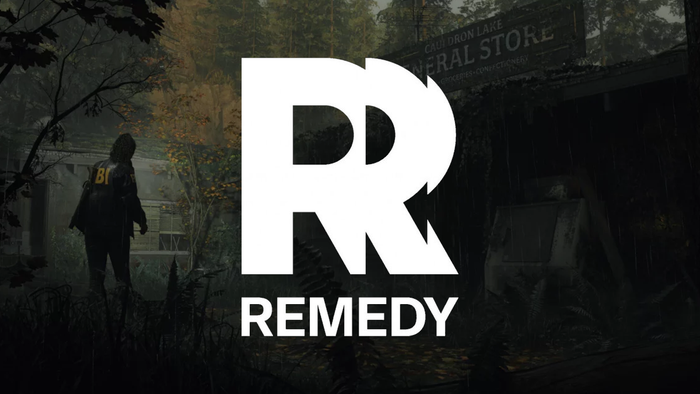Does the world need another mobile collectible card game?
Many independent developers are working on mobile collectible card games. This article analyses gameplay and game universe choices. It evaluates their impact on the potential audience of an already crowded and fast maturing market.

BISBOG is an independent developer-publisher of free-to-play mobile games. My job is to review and select the games we might want to publish. During the past five years, independent developers have submitted about 20 different collectible (or trading or battle) card games to us. Often, the financial success chances of these games were limited from the onset.
I would like to illustrate a conceptual approach to evaluate the market for and the audience of a game in a specific genre. The goal is to use publicly available information and common sense to analyse a game’s potential. This approach doesn’t follow precise rules and isn’t exhaustive. I still hope that it can help developers decide if they should start to spend money on a game project or if this is just a bad idea.
Collectible Card Games are attractive for smaller free-to-play developers. They are relatively cheap to produce. They have a high retention rate and a long life-time with new cards and their abilities providing endless game extensions. They sell booster packs, the ancestors of the powerful gacha monetization mechanics. Each of these points on its own is a reason to choose a game genre. Surely, there must be CCGs aplenty.
If there are many mobile collectible card games, they hide well – at least in the Americas and Europe. A look at the top app charts shows that, in the card category, in the countries of the Western hemisphere, lost somewhere amongst the all-invasive slot games, only a handful CCGs appear in the top 100 grossing card apps. The ones that come up are either established franchises, or games based on a well-known IP, or Japanese card games.
Even if not many CCGs are successful today, this still doesn’t mean that all future ones will be failures. Neither Shadowverse nor Animation Throwdown existed a few years ago and they are doing well today. They brought something new to the genre and were able to supplant the incumbents.
Developers are aware of the importance to refresh the genre and usually want to improve on one or two games they know well. They are convinced that new features will help user acquisition by poaching players from existing CCGs or by luring players that haven’t yet played CCGs. This thought might look sound but taking it just one step farther reveals why it’s so difficult to find players for a collectible card game.
The high retention rate of CCGs must also be interpreted as an additional hurdle to poaching players from other CCGs. Players have invested a lot of time and money in the card game they are presently playing. They’ll be loath to dump what they consider to be an asset or to commit the same effort to a new game. Poaching gamers from existing CCGs is difficult.
Luring new players, which aren’t interested in collectible card games, is even tougher. They obviously won’t be interested in new gameplay features. Can they be tricked into starting to play a card game without noticing it? The successful CCGs that launched their marketing campaigns trying to hide that they were card games eventually had to own up to it: they now all have cards all over their App Shops and Play Stores.
Acquiring a significant number of players for a new CCG is hard. Still, an original and new feature, which is also is easy to communicate, should make the task easier. Unfortunately, uniqueness and freshness might not only be useless but even counterproductive. Developers often focus on new gameplay features. They typically want to make a more strategic game or to add features from other genres to their card game.
A CCG in which chance plays a smaller role will be of interest to only a fraction of the existing audience. The players that value strategy are also likely to be the ones that don’t play free-to-play games because they abhor pay-to-win. Moreover, communicating efficiently why the game is tougher and therefore better will be a challenge. By going down this road, the minimum number of players needed to make a free-to-play game profitable will never be reached.
A second way to renew the CCG genre is to mix it with another genre. Clash Royal (tower defence) and Empires & Puzzles (match three) are two among many such successful games. However, the CCG game mechanics are used here as one among many other ways to strengthen the meta-game and the monetization. These aren’t collectible card games anymore and they fall out of the scope of this article.
When the resulting game feels like the combination of two genres, it will be played only by players interested in both genres: the potential audience will be reduced to the intersection of both genres’ audiences. However, even this might be an optimistic assumption! CCGs that feature a board (as in “chessboard”) will have to deduct from the above-mentioned intersection the board game purists and the card game purists, which, by definition, will not play a collectible card board game. Again, the potential audience of such a mixed-genre game is a priori tiny.
Collectible card games with a beefed-up storyline, a thick layer of lore and many skippable dialogues between heroes and enemies might feel like an RPG but are still card games. Japan has been successfully producing this type of CCGs, which also have many fans in the Americas and Europe. This user base is for different reasons attached to the Japanese origin of such CCGs. I doubt that it would accept such an RPG CCG if it were produced in the Western hemisphere.
A third way to renew the gameplay of CCGs would be to try and make a casual CCG and to advertise it as such. The potential audience loss would be limited, since most hardcore CCG players do also play casual mobile games. My experience is that only the fiercest snobs will not play a CCG because it’s too casual: most hardcore collectible card gamers will also indulge in a lighter CCG – whatever they might be clamouring on social media.
More relevant to the financial success of the game is its visual universe. The new feature can be characters, a storyline and a background that haven’t yet been associated successfully with collectible card games. This universe can be an entirely new one made up by the developer or an existing IP licensed for the CCG.
When creating a universe, the potential audience should be kept as large as possible. Collectible card gamers are mostly young and middle-aged men: there is no valid reason to put off a priori any sizeable subset of them. Many men don’t care about 20th century history, not to speak of the other centuries. A sizeable number of men are fed up to the back teeth with dwarves and goblins (elves are still fine, though). Most men simply don’t like Sci-Fi – even though Sci-Fi is mostly a men theme.
Moreover, even if the CCG audience should be a subset of the universe’s audience, not any and all subsets will work. Collectible card games are about battles and the universe must reflect this. A game with cards featuring bikini girls will miss the essence of the genre: the bikini girls should at least be mud wrestling. Creating the right universe is the first production step and probably the single most important one for the financial success of the game. Developers should consider this aspect very carefully.
Finding and licensing a suitable IP is even more difficult. Everything that applies for developer-created universes also applies for IPs, except that there are considerably fewer IPs available. Chances are that the audience of any IP will only have a relatively small intersection with the audience of collectible card games. Still, if the strength of the IP compensates for the potential audience loss – as seems to be the case for Animation Throwdown – building a CCG around an IP is a viable option.
The mobile, free-to-play collectible card market has a relatively small potential audience and is crowded. Launching a CCG with nothing more than new game mechanics is suicidal. Hoping to lure players that haven’t yet played collectible card games with new game mechanics is silly. Producing a more strategic or a more complex CCG and thereby reducing considerably the potential audience is to shoot oneself in the foot.
Going casual seems to be the only viable option for a mobile free-to-play collectible card game today. The game universe should either appeal to as many existing CCG players as possible or be built on a strong IP that puts off as few existing CCG players as possible. These advices won’t guarantee a success: but not following them will lead to a big disappointment.
BISBOG has just launched the consultancy Creative Interactive, which offers marketing and advertising services to app developers.
Read more about:
BlogsAbout the Author(s)
You May Also Like













